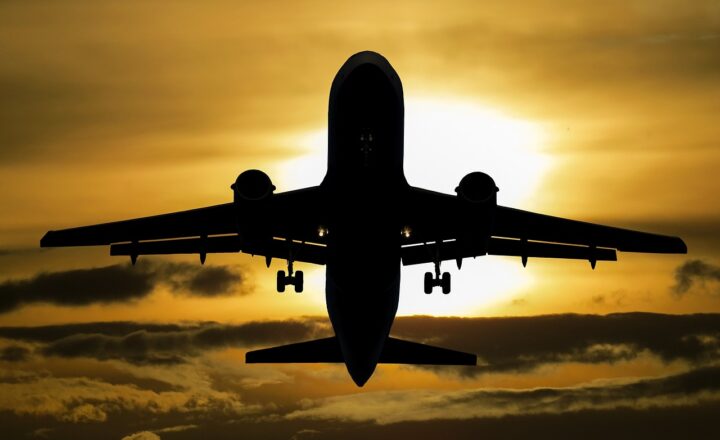The Aircraft Innovations That Are Making Flights Quieter and Greener
November 11, 2024

In the age of climate change and growing concerns about noise pollution, the aviation industry is under immense pressure to innovate and evolve. With a projected increase in global air traffic in the coming decades, airlines and aircraft manufacturers are actively seeking solutions that minimize their environmental impact while enhancing the passenger experience. This article will delve into some of the most exciting innovations that are making flights quieter and greener, paving the way for a more sustainable future in aviation.
1. The Importance of Reducing Noise and Emissions
As air travel becomes more accessible and prevalent, the adverse effects associated with it cannot be overlooked. Aircraft noise pollution is a significant concern for communities situated near airports, prompting regulations and stakeholder pressure on airlines and manufacturers to develop quieter aircraft. Meanwhile, the aviation industry accounts for a substantial share of global carbon emissions, prompting the urgent need for solutions that address both noise and environmental impact.
Reducing noise levels and emissions is not only beneficial for the environment and communities but also aligns with the expectations of modern travelers who increasingly prioritize sustainability in their choices.
2. Electric and Hybrid-Electric Aircraft
One of the most groundbreaking innovations in aviation is the development of electric and hybrid-electric aircraft. These technologies harness electricity as a primary power source, significantly reducing dependence on traditional jet fuel.
– Electric Aircraft: Fully electric aircraft rely entirely on electric power to operate. Companies like Ampaire and Pipistrel are leading the way with electric planes designed for short flights, featuring quiet operations and zero emissions.
– Hybrid-Electric Aircraft: Hybrid-electric aircraft combine traditional jet engines with electric motors, allowing for reduced fuel consumption and operating costs. Boeing and Airbus are investing in hybrid technologies, targeting mid-sized aircraft capable of regional operations while minimizing their carbon footprint.
These innovations not only promise quieter flights but also drastically decrease greenhouse gas emissions, heralding a new era in sustainable air travel.
3. Advanced Aerodynamics and Materials
Modern aircraft designs incorporate advanced aerodynamics and lightweight materials, resulting in quieter and more efficient flights.
– Aerodynamic Design: Innovations in aerodynamics, such as winglets and reshaped wings, have been pivotal in reducing drag. By improving airflow around the aircraft, manufacturers can achieve better lift-to-drag ratios, leading to less fuel consumption and quieter operations during critical phases like takeoff and landing.
– Lightweight Materials: The use of lightweight composites instead of traditional metals not only enhances fuel efficiency but also minimizes noise levels. Aircraft like the Boeing 787 Dreamliner harness advanced materials that enhance performance while also reducing their overall weight, providing significant benefits in noise reduction.
These advancements are indicative of the industry’s commitment to developing sustainability-focused aircraft designs.
4. Noise-Canceling Technologies
Incorporating technology to actively reduce noise is gaining traction in the aviation industry. Noise-canceling technologies, already popular in consumer electronics, are being adapted for aircraft.
– Active Noise Control (ANC): By using sensors to monitor outside noise levels, ANC systems can generate sound waves that counteract undesirable sound, thereby reducing cabin noise.
– Sound-Absorbing Materials: Innovative materials designed to absorb sound are being integrated into the airframe and cabin design. These materials help in dampening noise levels during engine operation and flight, enhancing overall passenger comfort.
Implementing noise-canceling technologies promises a significant enhancement in the passenger experience, making flights more enjoyable while meeting community expectations for reduced noise pollution.
5. Sustainable Aviation Fuels (SAFs)
Sustainable Aviation Fuels (SAFs) are crucial in the transition towards greener air travel. These fuels can be produced from renewable resources such as plant materials, agricultural waste, or even carbon captured from the atmosphere, allowing for a significant reduction in net carbon emissions compared to conventional jet fuels.
– Benefits of SAFs: Using SAFs can reduce lifecycle greenhouse gas emissions by up to 80%. Additionally, SAFs are compatible with existing jet engines, allowing airlines to leverage their current fleets without significant retrofitting.
Airlines like KLM, United, and Lufthansa have begun flights using SAFs, signaling the industry’s commitment to exploring sustainable alternatives that also reduce noise and improve air quality around airports.
6. Conclusion: A Quieter, Greener Future for Aviation
As the aviation industry faces the challenges of climate change and community noise concerns, exciting innovations are paving the way for quieter and greener flights. From electric aircraft and advanced aerodynamics to noise-canceling technologies and sustainable aviation fuels, these advancements hold the potential to transform air travel as we know it.
The roadmap to a more sustainable future in aviation is clearer than ever, demonstrating that with a commitment to innovation and collaboration, airlines can provide a travel experience that respects both the environment and the communities they operate in. As we look ahead, the future of air travel promises to be not only more efficient and responsible but also much quieter.
In summary, the ongoing pursuit of greener and quieter aviation technologies will make flights more sustainable while catering to the preferences of environmentally aware travelers.







